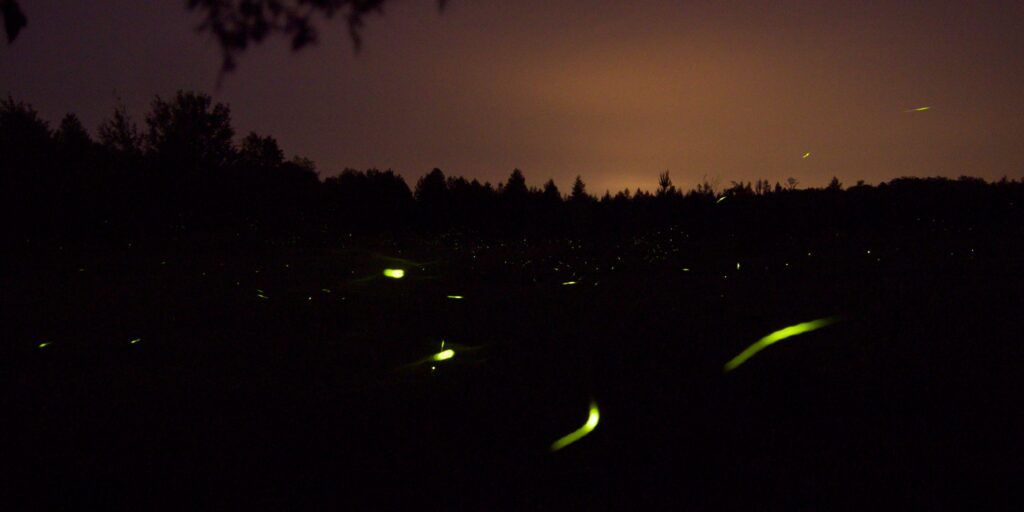
Fireflies or lightning bugs are soft-bellied beetles known widely for their use of bioluminescence – the biochemical emission of light – to communicate and to attract mates. There are more than 2,000 species of these beetles globally. They can be found in temperate and tropical climates, like marshes or wet, wooded areas, all throughout the world.
But if you are seeing fewer fireflies each summer, you’re not alone. Like many insects, firefly populations are under duress from threats like pesticides, pollution, and habitat loss. But fireflies are also facing another threat unique to luminous bugs: light pollution. Light pollution is making it harder for fireflies to reproduce because the artificial light is outshining their mating signals.
Male fireflies light up to signal availability and female fireflies respond with patterned flashes to indicate they’re interested. But artificial bright light from things like billboards, streetlights, buildings, and homes, is interfering with the fireflies reproduction communications.
The study, by researchers at Tufts University and the IUCN, warned that these threats facing fireflies could lead them globally to extinction.
The researchers also point to habitat loss as another major threat to fireflies. Firefly populations are especially vulnerable because they need special conditions to complete their life cycle. Mangrove forests and marshes around the world are being removed in favor of cash crops like palm oil.
Insects like fireflies are crucial components of many ecosystems where they perform important functions, like aerating soil, pollinating plants, and controlling pests. Firefly larvae feed on snails, slugs and mites, and many fireflies are effective pollinators.
We can’t afford for fireflies to go dark.
**********
Web Links
A Global Perspective on Firefly Extinction Threats
Fireflies Have a Mating Problem: The Lights Are Always On
Photo, posted June 5, 2010, courtesy of Matt MacGillivray via Flickr.
Earth Wise is a production of WAMC Northeast Public Radio.
Leave a Reply